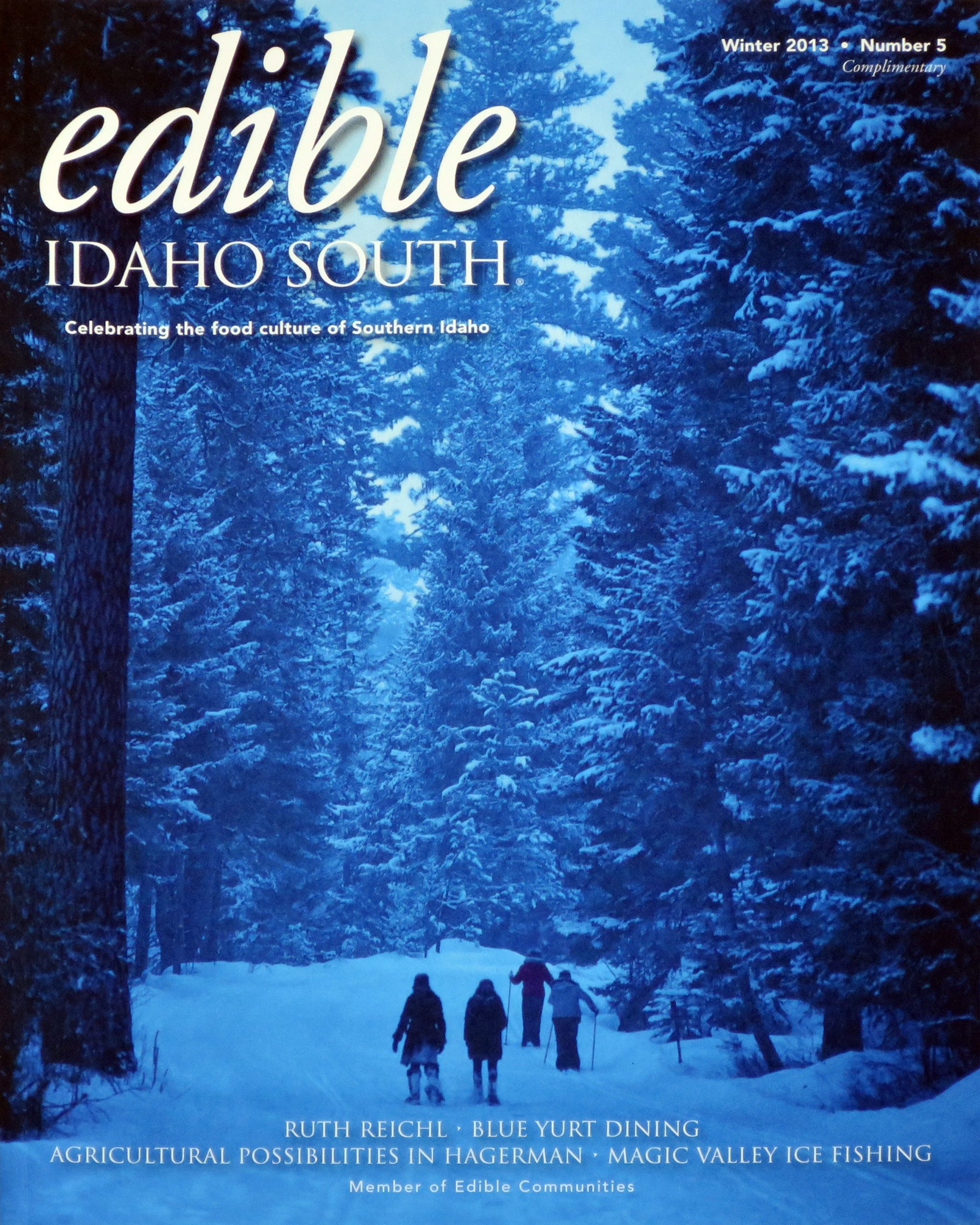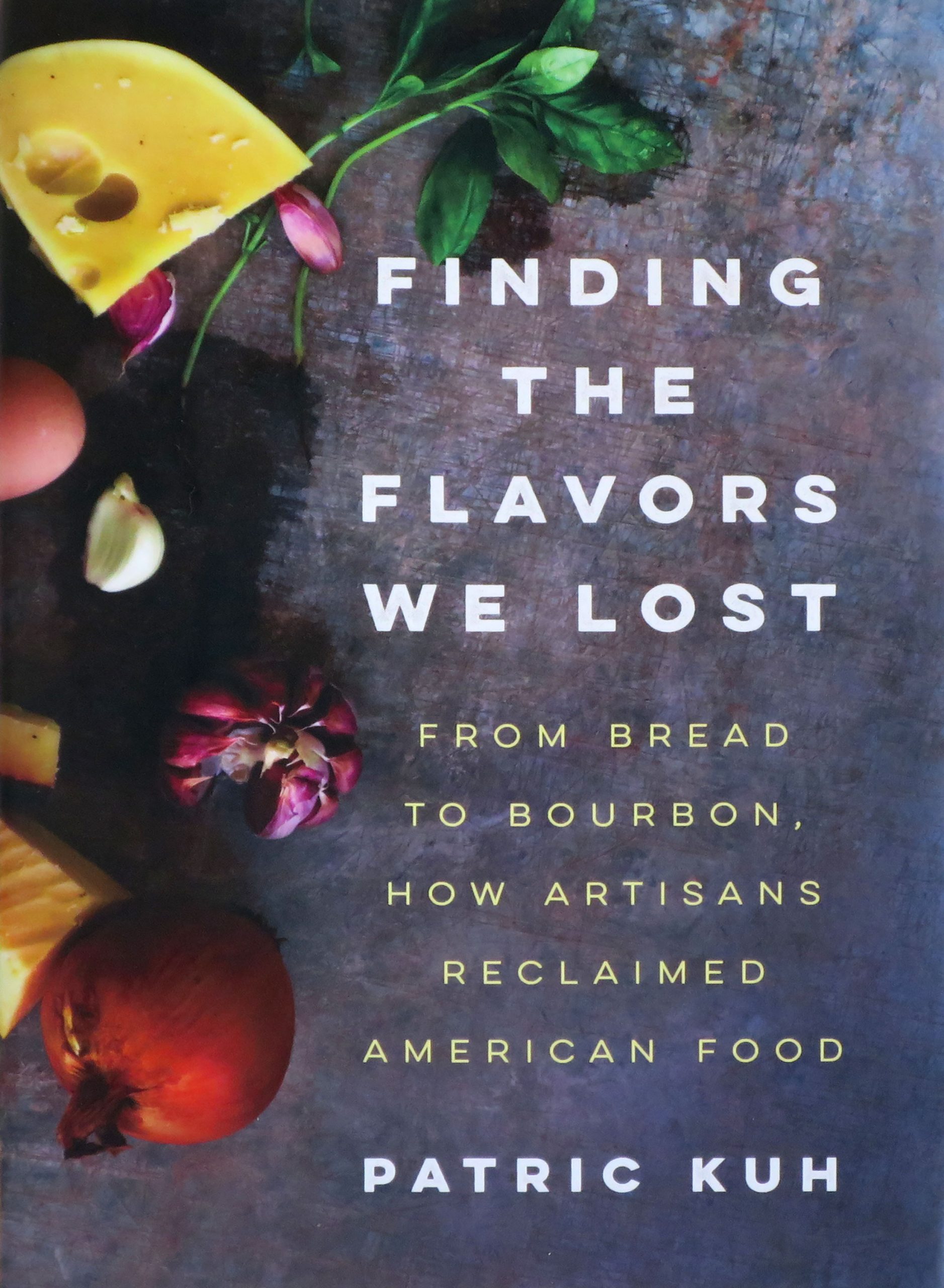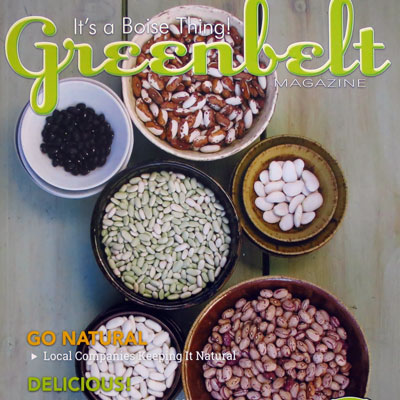Edible Idaho South
Jim Soran, owner of Zürsun Idaho Heirloom Beans in Twin Falls, is deceptively modest about the scope of his business.
“What we do is simple,” he says. “We take the beans and take the dirt off of them.”
What he actually does is much larger than that. He finds growers—and customers—for 41 varieties of heirloom beans, nine types of lentils, two colors of peas, and over a dozen grains, picking each crop over to ensure every package contains only top-quality beans, then packing them and distributing the products from Twin Falls to nearly 250 outlets across the country. From Alaska to Brooklyn to Dallas, foodies are eating Zürsun Beans.
Soran comes from a bean family. His father started an Idaho bean company called Soranco Bean Products in 1947, just after World War II. “At that time, there were 45 bean warehouses in the Magic Valley,” Soran says. “Now, there are five.”
Soranco focused mainly on pantry beans, such as black beans and pinto beans, as they still do today. They also sold peas and lentils to a woman named Lola Weyman, who, in 1985, had just started an heirloom bean company called Zürsun—named for Zurich, Switzerland, and Sun Valley. According to Soran, Weyman and her husband, John, were “early adopters” of a movement that focused on the quality and taste of food rather than cost or availability. Through her travels to large cities like San Francisco and New York, Weyman learned that there was a real desire for “heirloom” products.
“These strains have been passed from generation to generation,” Soran says. “Some of them are over 200 years old.”
Weyman formed a partnership with Bakker Brothers, a Magic Valley seed company that helped her find and even develop high-quality bean and lentil varieties. Weyman was soon selling beans across the nation, placing her product in stores such as Williams-Sonoma and Dean & Deluca. But when she developed lung cancer in 2004, she sold the business to Soran, who spent four months just learning all of the varieties that Weyman knew by heart.
“I knew pinto beans, and I knew black beans,” he says. “I didn’t know the different kinds. But I had to learn. With a gourmet food, you can spend 45 minutes on the phone talking about just two strains.”
Soran and Weyman both struggled to succeed against what he called a “stigma” against beans.
“The bean got a reputation as a poor man’s food during the Depression,” he says. “Soldiers came back from World War II having eaten in France and Italy and all over Europe, and they brought those new foods back with them. They didn’t want beans. It wasn’t until that stigma went away with the Baby Boomers that people started eating them again.”
“Jim was smart to buy the company,” says sales manager Allison Boomer, who signed on with Zürsun shortly after Soran bought the business in 2004. “It’s taken off like crazy. There’s a whole generation of people now who like to eat, and they’re eating a lot of non-meat foods.”
Boomer says the company ran out of scarlet runner beans last year, a legume with a striking purple and black mottled pattern. The rattlesnake bean, another mottled variety, is particularly popular as well— despite, as Soran points out, its similarity to the common pinto bean.
“You want to feel good about what you’re eating,” he says. “Maybe you don’t want a pinto bean, maybe you want a rattlesnake bean. It sounds much cooler.”
Currently, Soran estimates that about 20 percent of his growers are in the Magic Valley and grow mostly flageolet and cannellini beans. North Idaho growers grow his lentils. His Snowcap, lima, and fava beans are grown in other western states; the black beans in Michigan; and 10 percent of his inventory, like Adzuki beans, are grown overseas, where they’re indigenous.
The company also distributes recipes for many of its legumes, all of which were developed by Boomer to help relaunch the brand in 2006. She cooked each bean by itself, with no seasoning, to determine each bean’s subtle flavor and how best to complement it.
“All the beans have a distinctive flavor,” she says. For example, the Christmas lima bean tastes like roasted chestnuts; the Calypso bean tastes like a baked potato, so Boomer suggested serving it with sour cream and a little bit of chives and bacon.
Boomer’s favorite is the Snowcap, a beautiful ivory- and coffee-colored bean with slight burgundy markings. She suggests cooking “pot beans” with it, simmering the beans with onions, garlic, chili powder, diced tomatoes, and a touch of salt before serving the stew with cornbread. “It’s so easy,” she says “It’s a big, beefy bean that has a great texture.”
Though Boomer is perhaps more passionate than most about beans, she’s in good company. Soran says the company’s customer base is loyal and large, spreading the bean gospel mostly by word of mouth.
“We don’t have to advertise,” he says with a laugh. “If we did, we’d have more customers than product.”
Bon Appétit
If words like “humble” and “homey” come to mind when you think about beans, these next pages will change your tune. Whether tumbled with citrus, roasted with sausage, or stewed with all that is bright and green, these are winter’s stealth powerhouses.
Lesson 1: Master the Basics
Cooking a simple pot of beans—whether it’s a meal in itself or the start of something grander—can be, well, weirdly complicated. Methods (and opinions) on the topic vary widely, but this is how we here at BA do it:
cropped-heirloom-beans-christmas-lima
Soak those beans. (Okay, okay, you don’t have to—see below—but it will reduce your day-of cook time in a real way.) Cover them with several inches of cold water and refrigerate overnight. (They may start to sprout or ferment if your kitchen is too warm.)
ADVERTISING
Transfer your beans to a heavy pot and top off with a couple inches of water. (No, it’s not necessary to toss the soaking liquid.) Bring them to a gentle simmer, skimming off any foam that rises to the surface. (Aggressive boiling might cook them a bit faster, but they’ll be more likely to break apart.) Now’s the time to add aromatics like onions, chile, or garlic if you like, along with dried and/or fresh herbs like bay leaves, thyme sprigs, rosemary sprigs, etc. (Hold off on salt and acidic ingredients like tomatoes though.)
Cook, partly covered, until beans are tender. (Some kinds tend to fall apart, and some are better at staying firm.) Add salt until the broth tastes well seasoned. (Taste the liquid for seasoning at first, not the beans—they’ll need about half an hour in the liquid to absorb that salt.) Now add tomatoes or other acidic components if you like, and heat a little bit to meld those flavors.
shed-pan-roasted-halibut-with-herbed-corona-beans
Cooked beans are ready to become dinner at a moment’s notice. Photo: Peden + Munk
Peden + Munk
Unless you plan on using them right away, let the beans cool completely in their cooking liquid. (Don’t you dare throw away that bean broth—keep scrolling.) They’ll keep refrigerated for about five days, ready to become dinner at a moment’s notice. Did we mention they freeze beautifully, too? We like using deli pint and quart containers—so there’s no harm in making a lot.
Lesson 2: A Few Words on Soaking Beans
All hope is not lost if you forget to soak your beans overnight; it just means you’ll be eating a bit later. Put the beans in a big pot, cover with plenty of water, and bring to a boil, then simmer for a couple of minutes. Take the pot off the heat, throw a lid on it, and let the beans sit for an hour (this is called “power-soaking”). Then proceed as usual.
Not Stoked to Soak?
“Soaking beans? Never. When I was growing up in a Mexican-American family, beans took all day, period. We flavored the beans with salted pork and ham hocks, then let them simmer away, hands-off, for however long it took to make them perfect. And since they weren’t presoaked, the flavor of the meats and aromatics penetrated the flesh, giving the beans more depth and character. For me, beans take all day to cook, and I’m okay with that.” —Rick Martinez, associate digital food editor
confit-chicken-thigh-and-andouille-sausage-cassoulet
Gentl & Hyers
Lesson 3: We Like Big Beans and We Cannot Lie
Big beans (limas, Tarbais, gigantes, coronas) are stars of the legume family. They’re miraculously creamy on the inside and almost never fall apart, achieving that ideal ratio of velvety interior to firm exterior. And, in the case of cassoulet, they’re the only ones bold enough for the assignment. You wouldn’t use a shot glass to drink a beer, right? So don’t use a small bean for a big bean’s job.
Get the Recipe: Confit Chicken Thigh and Andouille Sausage Cassoulet
all-the-different-beans-yo
Lesson 4: Not All Beans Are Created Equal
Buy your beans the same way you would your meat or produce: Find a source you trust, and pay a little bit extra for higher quality. Heirloom beans boast more complex flavors than what you find in your standard bag of supermarket legumes. When cooked properly, they barely need any embellishment at all beyond salt.
mail-order-beans-illo
Lesson 5: The Best Beans Are In the Mail
You’re probably not going to see these multihued beauties at the grocery store, which is why you should follow our lead and get on the mail-order-bean bandwagon. There’s a whole wide world of visually stunning, richly flavored heirloom varietals out there just waiting to change the way you think about beans forever. These four online sources really deliver the goods. —Josie Adams
yellow-bean-illo
Rancho Gordo
Steve Sando founded Rancho Gordo with a mission to grow superior (and colorful!) beans and get them onto people’s plates. Today the company’s name is synonymous with the heirloom bean revolution.
green-bean-illo
Elegant Beans
Husband-and-wife team Chip and Bobbie Morris run Elegant Beans, abiding by the philosophy that sustainable, non-GMO farming is the key to truly delicious beans and healthy living. (We totes agree.)
blue-bean-illo
Zürsun Beans
Jim Soran, second-generation bean guy and co-owner of Zürsun Beans, works with farmers to grow on small-scale farms in the Snake River Canyon region of Idaho, a.k.a. the Magic Valley. (Yeah, the magical fruit actually grows in the Magic Valley.)
pink-bean-illo
Alma Gourmet
While Alma Gourmet doesn’t deal exclusively in beans, its curated roster of hard-to-find Italian varietals is second to none. And it certainly doesn’t
hurt that you can place an order for olive oil, truffles, and a variety of cheeses at the same time.
pressure-cooker-gigante-beans-in-tomato-sauce
Photo: Christopher Testani
Christopher Testani
Lesson 6: Feel the Pressure
“Beans in the pressure cooker is a tale of two loves: the beans themselves, and the vessel that is built to bring out their best. Pressure cookers use steam to cook foods faster; that means beans go from dry to delightfully creamy in about half an hour. If I had to choose one thing to make in it for the rest of my life, it would be beans. I’d never run out of varieties, I’d never be disappointed, and dinner would never run late.” —Carla Lalli Music, food director
Get the Recipe: Brothy Heirloom Beans with Cream
Lesson 7: Beans Don’t Go “Bad,” But…
One big difference between a bag of beans and a jug of milk? You can’t tell how old a bag of beans is by smelling it. Dried beans don’t go “bad,” but the older they are, the longer they take to get tender—and ancient ones sometimes won’t get tender at all. So buy in small quantities, rotate your stock, and toss anything dusty.
schmaltz-refried-pinto-beans
Gentl & Hyers
Lesson 8: A Bean’s Best Friend are Fat and Salt…
Beans without fat and salt are like bread without butter; they just aren’t worth eating. Beans don’t have the kind of internal fat that, say, a steak has—on their own, they’re kind of a Boring Betty. But add schmaltz or lard and a healthy amount of salt, and all of a sudden they’re the Prom Queen.
Get the Recipe: Schmaltz-Refried Pinto Beans
black-eyed-pea-chile-verde
Gentl & Hyers
…and Meat
Some friendships are best as a trio. Beans + fat + meat = #SquadGoals. Meat knows how to be a good friend without being too clingy—only small amounts are needed to really make a bean dish sing. This meat-as-flavor concept is economical, decently healthy, and very much in tune with your friends who are currently into this whole “vegetable-forward” thing.
Get the Recipe: Black-Eyed Pea Chile Verde
Lesson 9: Forget About that Whole Gas Thing
There are a whole lot of old wives’ tales out there about neutralizing beans’ “musical-fruit” qualities. Add fennel seed. Use baking soda in the cooking liquid. Chew them more. The bottom line? Studies have shown that the connection between beans and gassiness is probably, well, overblown.
tomato-and-cannellini-bean-soup
Tomatoes and beans: Happier together. Photo: Eva Kolenko
Eva Kolenko
Lesson 10: Add Acid (Just Know When)
Ignore those rumors you heard about tangy ingredients like tomatoes and vinegar ruining your beans: Acid is not the enemy. Absolutely include them; just make sure to do so when the beans are almost finished cooking. If you add acid earlier, the bean skins may toughen. Tomatoes and beans are a very happy couple—they just met later in life.
Lesson 11: Pick the Right Bean for the Job
All beans start out glossy and full of promise. Cook ’em up, though, and they’ll show their true colors—some remain perky and distinct while others tend to soften and fall apart. This is to say, you need to pick the right bean for the right job. Here’s a quick guide. —Chris Morocco, senior food editor
beans-primer-the-softies-illo
The Softies
These delicate guys are best for soups, purées, and other applications that don’t hinge on having totally intact beans. Their thinner skins mean they have a tendency to burst and release starchiness into their cooking liquid. Try: borlotti, pinto, adzuki, cannellini, navy.
beans-primer-the-in-betweens-illo
The In-Betweens
Straddling the middle are these stalwarts, which are able to maintain their shape if cooked carefully but also more than happy to break down when pushed. They’re super versatile, the Yukon Golds of the bean world. Try: black, tarbais, black-eyed peas.
beans-primer-the-heavy-duties-illo
The Heavy-Duties
Larger beans are the ideal candidates for salads and other cold preparations. They may take a little longer to cook, but even the creamiest varieties are held together by thick skins that help them hold their shape. Try: gigante, corona, large white.
pasta-e-fagioli-with-escarole
Gentl & Hyers
Lesson 12: Embrace the Starch
You have our permission to overcook your beans, even to the bursting point. These broken-open beans will lend creaminess and richness to your cooking liquid without adding too much fat, the signature of super-satisfying cucina povera dishes like pasta e fagioli, which is basically a hug in liquid form.
Get the Recipe: Pasta e Fagioli with Escarole
Lesson 13: Sometimes, You Just Need Canned Beans
“As the editor of this magazine, I know I’m supposed to sing the praises of heirloom beans and all that, but on a Tuesday night at home, here’s my reality: Sauté some minced onion and garlic in olive oil, open a can of Goya black beans (I drain most of that mysterious viscous liquid), and dump them into the pot. Throw in some chopped cilantro. Simmer for ten minutes and remove from heat. Let sit—top on—till I’ve finished a couple bottles of beer. Serve with rice and whatever quick-fix tacos I’ve cooked up. I’d be lying if I said those beans weren’t absolutely delicious. And so would you.” —Adam Rapoport, editor in chief
brothy-beans
Don’t you dare throw out that broth. Photo: Peden + Munk
Peden + Munk
Lesson 14: Save That Cooking Liquid!
Those people who tell you to toss your bean cooking liquid? They can’t sit with us. Seasoned liberally with salt and oil, it’s practically a soup on its own. Use it like stock!
blood-orange-and-mixed-bean-salad-with-sprouts
Gentl & Hyers
Lesson 15: Beans Make Great Salads
The cure for February blues isn’t always soups and braises. It’s also perfectly cooked beans, dressed simply, with loads of citrus and fresh greens. Citrus is actually one of the best enhancers to a bean’s subtle taste (think of lime juice as the hype man). Bonus: If you’ve got cooked beans, the recipe below—or whatever riff you’d like—is a snap.
Finding The Flavors We Lost
“In the course of writing this book, I have amassed files that bulge with clippings of ventures I felt I needed to get to. I have names of brewpubs in Columbus, coffee roasters in Cedar Rapids. There’s a farm-to-table restaurant in Omaha. Zursun heirloom beans in Twin Falls, Idaho, Crooked Stave Artisan Beer Project in Denver—how could I have written this book and not been to any of these places yet?” (pg. 254)
excerpt from: Finding The Flavors We Lost: From Bread to Bourbon, How Artisans Reclaimed American Food










